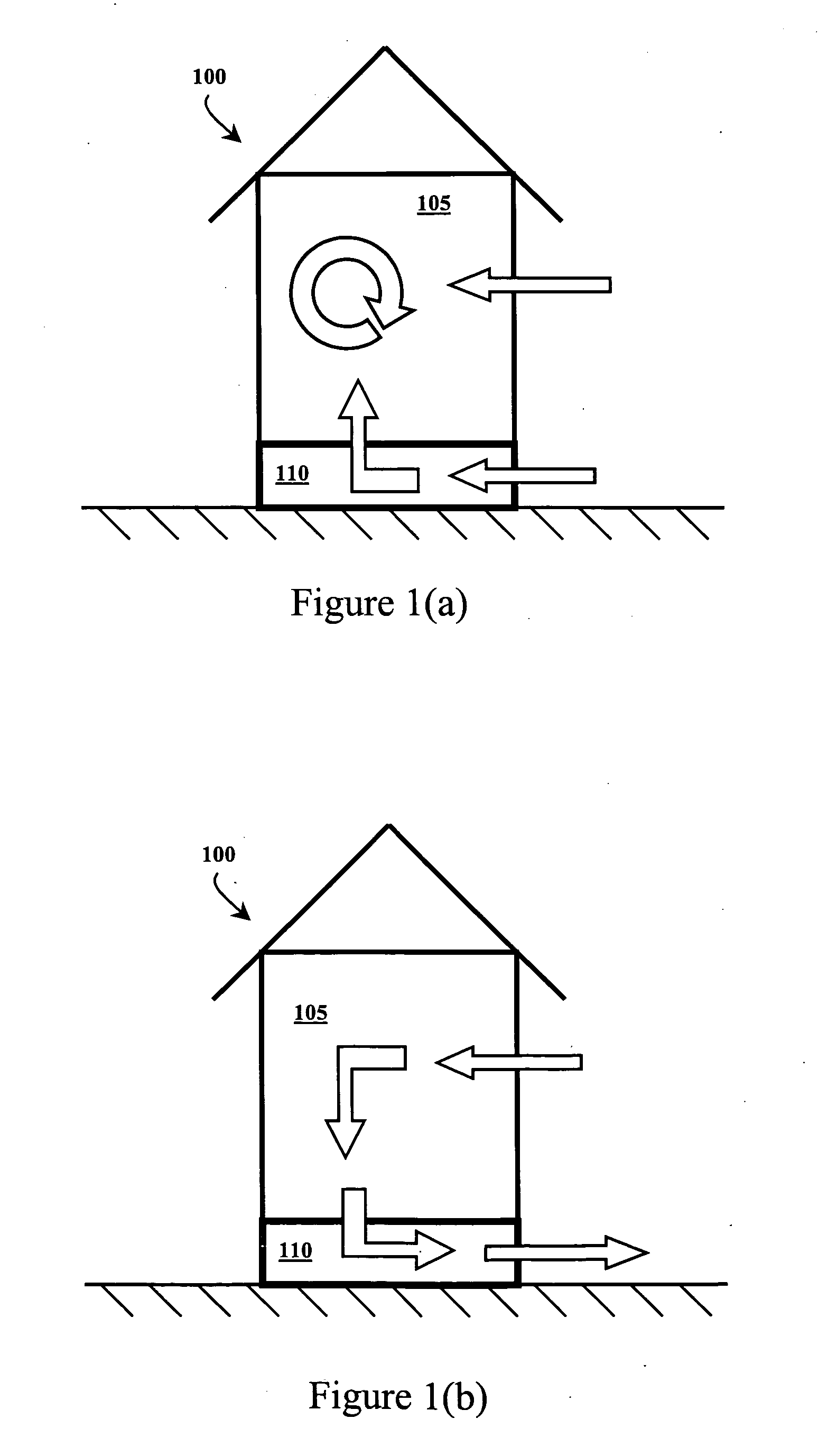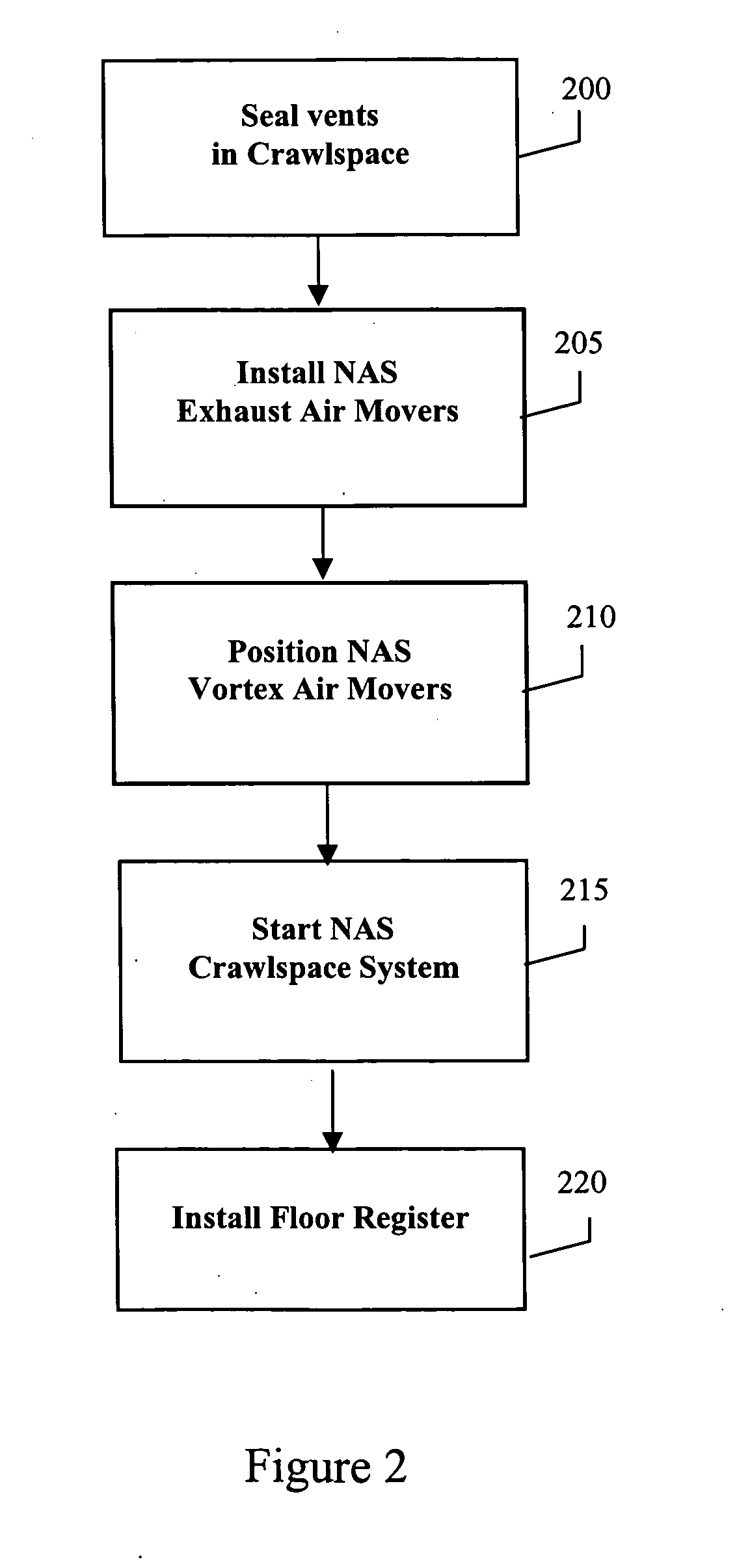Negative air supplied (NAS) crawlspace system
a technology of negative air and crawlspace, which is applied in ventilation systems, lighting and heating apparatuses, heating types, etc., can solve the problems of unresolved sickness that cannot be overcome, significant amounts of mold and wood rot, and the level of mold spores per cubic meter of air can be harmful, and the effect of reducing the number of mold spores
- Summary
- Abstract
- Description
- Claims
- Application Information
AI Technical Summary
Benefits of technology
Problems solved by technology
Method used
Image
Examples
Embodiment Construction
[0033]FIG. 1(a) shows the airflow in a traditional home 100 with a crawlspace 110. In the traditional home 100, air enters the crawlspace 110 through vents that are provided in the home for the crawlspace. The air becomes heated in the crawlspace, especially in summer months, and enters the living space 105 of the home through cracks, holes and other openings in the floor of the home. Air in the living space 105 of the home gets trapped inside the home and the same unhealthy air re-circulates within the home. Common HVAC filters are not designed to trap harmful particulate that is microscopic like mold. The airflow shown in FIG. 1(a) is unhealthy for the occupants of the home because mold spores in the crawlspace 110 are carried with the air into the living are 105 of the home. Increased spore counts in the living area 105 of the home lead to increased sicknesses for the occupants of the home.
[0034]FIG. 1(b) shows that the airflow is changed in the same home 100 after the present Ne...
PUM
 Login to View More
Login to View More Abstract
Description
Claims
Application Information
 Login to View More
Login to View More - R&D
- Intellectual Property
- Life Sciences
- Materials
- Tech Scout
- Unparalleled Data Quality
- Higher Quality Content
- 60% Fewer Hallucinations
Browse by: Latest US Patents, China's latest patents, Technical Efficacy Thesaurus, Application Domain, Technology Topic, Popular Technical Reports.
© 2025 PatSnap. All rights reserved.Legal|Privacy policy|Modern Slavery Act Transparency Statement|Sitemap|About US| Contact US: help@patsnap.com



